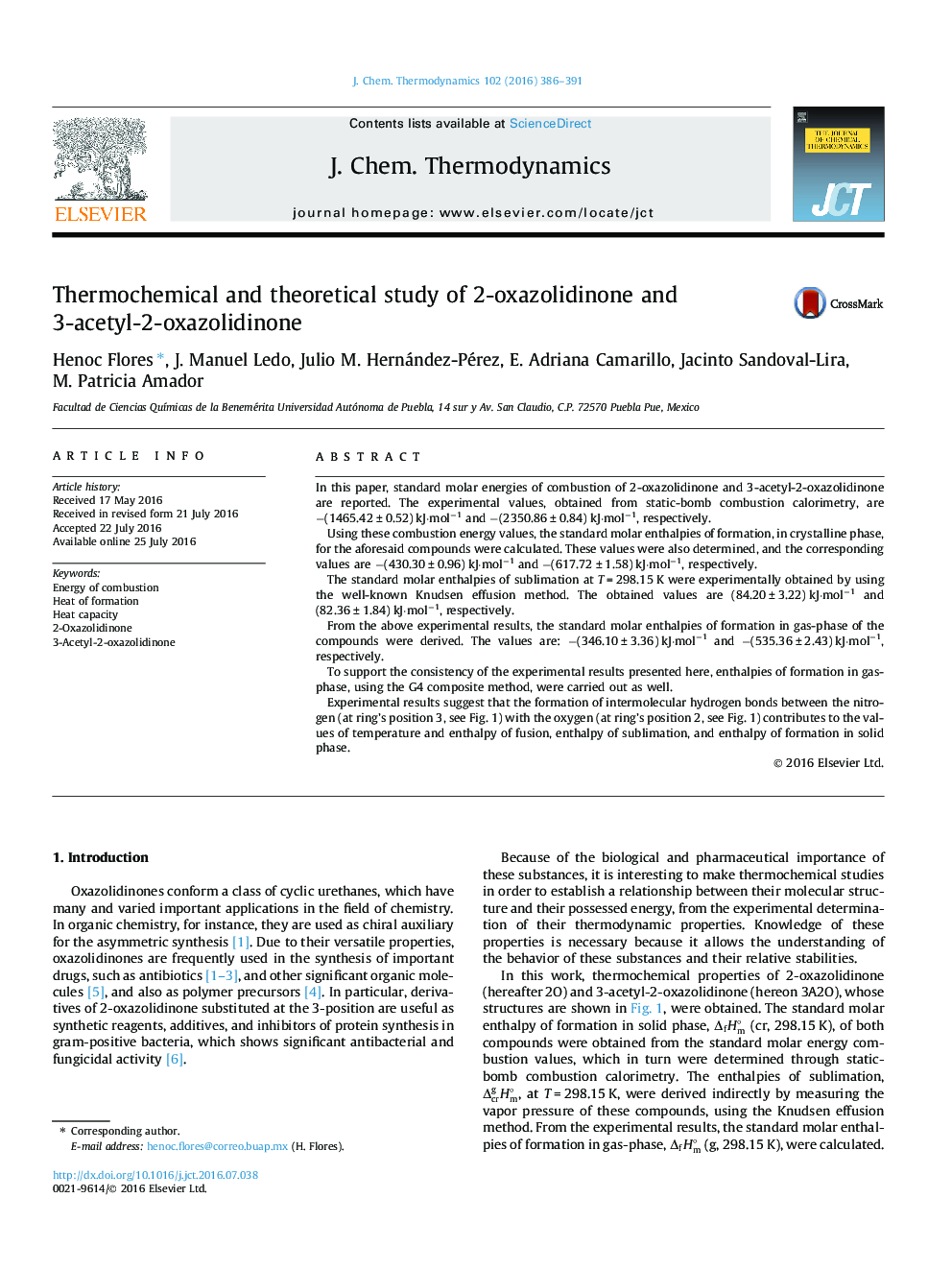| کد مقاله | کد نشریه | سال انتشار | مقاله انگلیسی | نسخه تمام متن |
|---|---|---|---|---|
| 214898 | 1426211 | 2016 | 6 صفحه PDF | دانلود رایگان |
• The energies of combustion of 2-oxazolidinone and 3-acetyl-2-oxazolidinone were determined by combustion calorimetry.
• Formation enthalpies of 2-oxazolidinone and 3-acetyl-2-oxazolidinone were derived from combustion energies.
• Enthalpies of change of phase were determined by Knudsen effusion method.
• Experimental results were compared with those obtained by the Gaussian-4 procedure.
• The influence of the intermolecular hydrogen bond on melting and sublimation enthalpies were studied.
In this paper, standard molar energies of combustion of 2-oxazolidinone and 3-acetyl-2-oxazolidinone are reported. The experimental values, obtained from static-bomb combustion calorimetry, are −(1465.42 ± 0.52) kJ·mol−1 and −(2350.86 ± 0.84) kJ·mol−1, respectively.Using these combustion energy values, the standard molar enthalpies of formation, in crystalline phase, for the aforesaid compounds were calculated. These values were also determined, and the corresponding values are −(430.30 ± 0.96) kJ·mol−1 and −(617.72 ± 1.58) kJ·mol−1, respectively.The standard molar enthalpies of sublimation at T = 298.15 K were experimentally obtained by using the well-known Knudsen effusion method. The obtained values are (84.20 ± 3.22) kJ·mol−1 and (82.36 ± 1.84) kJ·mol−1, respectively.From the above experimental results, the standard molar enthalpies of formation in gas-phase of the compounds were derived. The values are: −(346.10 ± 3.36) kJ·mol−1 and −(535.36 ± 2.43) kJ·mol−1, respectively.To support the consistency of the experimental results presented here, enthalpies of formation in gas-phase, using the G4 composite method, were carried out as well.Experimental results suggest that the formation of intermolecular hydrogen bonds between the nitrogen (at ring’s position 3, see Fig. 1) with the oxygen (at ring’s position 2, see Fig. 1) contributes to the values of temperature and enthalpy of fusion, enthalpy of sublimation, and enthalpy of formation in solid phase.
Journal: The Journal of Chemical Thermodynamics - Volume 102, November 2016, Pages 386–391
